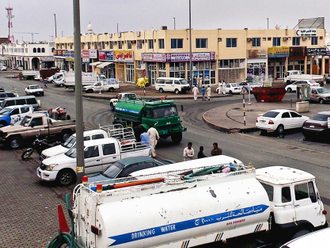
I’m feeling smug. It’s not a good look, least of all for me, with nothing much to feel smug about. I just can’t help it though. You see, I’m floating in an infinity pool at the opulent Hotel Caruso in the southern Italian town of Ravello, a discreetly fashionable destination for celebrities and high society.
A warm wisteria-scented breeze gently sways the fruit in the terraced lemon groves clinging to the lush green hills below. It’s hard to believe that, not far away, obscured by a range of emerald knolls, coach-loads of tourists are thronging the narrow streets and alleyways of Amalfi.
As charming as that ancient port town is, I’d searched for somewhere a little more sedate, a retreat from where this spellbinding coastline could easily be explored. In mountain-top Ravello, smugly self-satisfied, I’ve not only found that retreat, but a destination in its own right.
Late British Prime Minister Winston Churchill, King Farouk of Egypt, Jacqueline Kennedy Onassis, Sting, Humphrey Bogart, Hillary Clinton, DH Lawrence and Greta Garbo are among some of Ravello’s better known visitors. Many of these visits are commemorated around town with plaques, photographs and other mementoes.
To get a flavour, first soak up some old-style Hollywood glamour with a visit to Belvedere Principessa di Piemonte. Just a few hundred metres from Hotel Caruso, along a narrow flagstone street, it’s a tiny walled garden overlooking a spectacular panorama. It was here, in 1953, that famous director John Huston filmed scenes from Beat The Devil, with Humphrey Bogart, Jennifer Jones, Gina Lollobrigida, Robert Morley and Peter Lorre.
Somehow, this tranquil park, manicured with violet, burnt orange and deep red impatiens, has escaped the attention of guidebook writers. Had we had the time, it would have been an idyllic spot for a picnic. As it was, we lingered only long enough to stroke the proprietorial resident tabby cat before continuing to Piazza Duomo, Ravello’s main square.
At the square, we sipped espresso at a pavement café in the shade of a towering umbrella pine, and indulged in the Italian sport of watching the world go by. I also got chatting to an elderly local. Like many of his vintage, he’d left Ravello in his youth to work in London, returning home on retirement. “Unless you wanted to work on the terraces, growing lemons or olives, there was little work for the young men in my day,” he explained.
A summer trip he made back to Ravello in 1962 coincided with a visit by Jacqueline Kennedy, as she was named then. Now, 20 years after her death, time has possibly dimmed her star, but she was an icon then.
“The Princess Diana of my day,” my new friend said wistfully. He caught glimpses of her a few times at the square. “Bellissimo,” he smiled, lost in his memories. Until then, Ravello had been a relatively well-kept secret among the wealthy and well-connected. Jacqueline Kennedy put it on the map and it hasn’t slipped off.
Just a few steps from the square we strolled into Villa Rufolo. The 13th-century villa and breathtaking gardens were restored in the 1800s by a Scottish industrialist, Francis Neville Reid.
In 1880 German composer Richard Wagner was so inspired by the beauty of the gardens they became the imagined setting for the second act of his opera, Parsifal. Proud of this link, Ravello is now the site of internationally renowned classical musical festivals.
Leaving Villa Rufolo it’s a 15-minute stroll along ancient winding back streets to the enchanting Villa Cimbrone. In 1904 Ernest William Beckett, later ennobled with the title Lord Grimthorpe, was told stories of the fading beauty of the villa and its grounds by Nicola Mansi, an Italian tailor he’d met in England. Beckett visited, fell in love with the dilapidated property and bought it. Then, with Mansi’s help, he set about an elaborate restoration project. An eclectic blend of Moorish, Venetian and Gothic architecture framed by formal English and Italian landscaping has resulted in something far greater than the sum of its parts. It’s a place of bewitching allure.
Follow the wisteria-shaded Avenue of Immensity and you’ll come to the spectacular Terrace of Infinity, a paved outcrop with marble busts overlooking the Gulf of Salerno. It must be one of the most photographed sights along the Amalfi coast, but was blissfully deserted when we were there.
Strolling back to our hotel we paused to read the menu outside Ristorante Villa Maria, the selection made all the more tempting by the fact that the kitchen garden was just a few steps away. Zucchinis jostled for sunlight alongside stout aubergines and plump tomatoes.
There’s no excuse for a poor meal anywhere on the Amalfi Coast or in the mountain towns perched above. Vegetables grow in volcanic soil warmed by buttery sunshine. Meat comes from stock grazing on sweet grass and wild mountain herbs. And the Mediterranean bounty includes some of the freshest and best fish you’ll ever eat.
Chef Mimmo di Raffaele at Hotel Caruso’s Belvedere restaurant told me that lobster was the pick of the local seafood. I didn’t sample it, but I did try his sea bass fillet on a bed of sea salt served with a potato tartlet. No doubt the palatial setting of the restaurant terrace, commanding a view of the sparkling sea, enhanced the experience, but it was one of the most exquisite meals I’ve ever eaten.
Breakfast took some beating too. Our table was so artfully laid out, with a tea rose centrepiece standing on an apricot linen tablecloth, I felt almost guilty disturbing it. The temptation of a bowl of home-made yogurt laced with locally produced chestnut honey soon swayed me, followed by sweet pastries so light and flaky I dream of them still. As we ate, the peal of church bells echoed off mountains behind us.
Beguiling as Ravello is, it would be criminal to ignore nearby Amalfi and Positano. Just time your visits well. Get to Amalfi by 9am and out again by lunchtime and you’ll avoid the worst of the crowds.
The Hotel Caruso offers a free shuttle bus to Amalfi, an ancient maritime superpower.
If for no other reason, you should visit Amalfi to travel the sinuous vertigo-inducing road that descends to the coast. Gaudy souvenir shops compete to lure day-trippers. Spurn them and seek out the stores selling handmade paper and local antiques.
In distant times Arab traders passed the secrets of making paper on to local craftsmen. They set up mills fed by local springs and their skills have trickled down the generations.
The granddaughter of a local paper-maker, serving in one of the shops, told us there were few old craftsmen left now. For an insight into the importance of paper-making in Amalfi visit the town’s Museo Della Carta, dedicated to the craft.
Don’t miss Pasticceria Savoia. Right at the entrance to town it sells mouth-watering pastries, sweet treats and gelato. Try the chocolate-covered orange slices. If you can stop at one, you’ve got a lot more self-control than I have.
A bus or taxi will take you from Ravello or Amalfi to Positano. But if the thought of another journey along the vertiginous local roads leaves you feeling giddy, go by sea. There are plenty of ferries from Amalfi. Some hotels in Ravello, like the Caruso, have their own boat to take you.
As we glided into Positano on a twinkling sea, the sheer joyfulness of the picturesque ice-cream coloured homes cascading down to the water’s edge brought a smile to my face. It really is impossibly pretty. Like Amalfi, Positano is in danger of being loved to death. Again, get there early to avoid the crowds.
One shopkeeper told me there were more boutiques in Positano than any other small town in Italy. I can believe it. It felt like I’d wandered into the world capital of trendy linen resort wear.
For a scruff like me, it was all too much. We retired to a beachfront restaurant. After an early lunch of local squid in sweet cherry tomato sauce we left, just as ferries docked disgorging hundreds of tourists.
Back in Ravello that afternoon, I wandered the quiet geranium-lined lane ways and had them to myself. Much as I enjoyed visiting Amalfi and Positano, it is Ravello I would return to. But don’t take my recommendation. Follow one of the planet’s wealthiest men, who, when looking for somewhere peaceful, discreet and romantic to take his new bride for their honeymoon in 2012, chose Ravello and the Hotel Caruso.
I’m afraid I can’t reveal his identity. However, his initials are MZ. He co-founded one of the world’s leading on-line companies. An Oscar-winning Hollywood movie was made about his life. And unlike me, he really does have an awful lot to be smug about.











